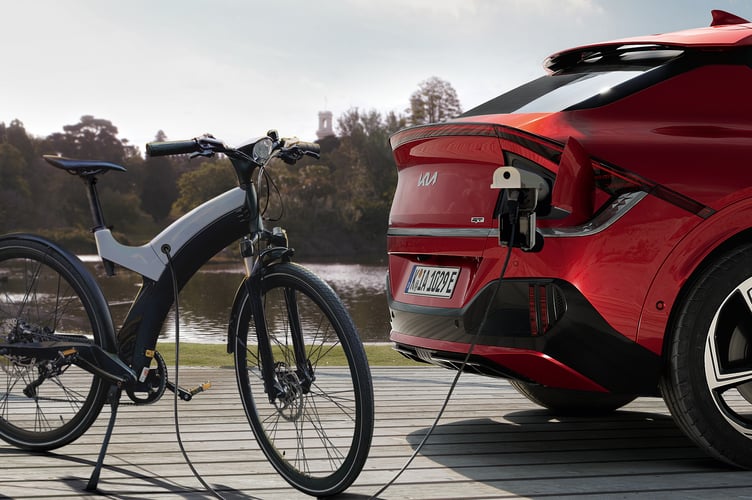Cars spend 90% of the time parked. Now with the right technology, the stored energy in the battery of a parked EV can become a useful resource.
The potential of this technology was shown in 2011, when a fleet of electric Nissan Leafs contributed to the relief effort after the earthquake and tsunami in Fukushima, Japan.
The EVs served as mobile electric generators for rescue teams and communities without power. The energy stored in the car batteries powered communications, lighting, community kitchens and charged power tools for rescue workers.
And in the UK, when power was cut off by Storm Eunice in 2022, EV drivers were able to use the Kia EV6 and the Hyundai Ioniq 5 to charge their laptops and power fridges.
In Australia, a woman powered her 11-year-old son’s dialysis machine during a power cut with her electric BYD. The technology to power a single appliance is called vehicle-to-load (V2L) charging and is also available on the Kia Niro, MG and VW ID cars.
The ability to send electricity from your car to the grid is the next step, called vehicle-to-grid (V2G) charging. The UK’s current fleet of electric cars have the potential to store 18GWh of electricity, double what can be held in the UK’s biggest storage facility, the Dinorwig pumped storage plant in Snowdonia.
Alex Schoch of Octopus Energy explains: “We recently moved past a million EVs on UK roads – a major milestone – but their true power for storing energy remains untapped. Once we reach 10 million electric cars on the road, we’ll have enough storage to power the entirety of Great Britain during peak times.”
V2G can help the grid to use more renewable energy because when demand is low, the grid is powered mostly by renewables, like wind turbines running overnight. An EV can charge with low-cost energy, store that energy and at peak times send the renewable energy back to the grid.
This works well with renewables like solar and wind, and nuclear energy which are not able to increase their output in response to high demand. National Grid is rapidly building grid-scale battery systems and other energy storage, but currently we are still using gas peaking plants to balance the grid.
These gas-powered stations only come on to generate electricity when demand exceeds the supply. The operators of these plants are paid very high prices for their electricity to compensate them for maintaining plant that will stand idle most of the time, pushing up electricity prices for consumers.
V2G could balance the grid for a fraction of the cost of gas peaking plants and reduces the need for other energy storage.
The EV driver benefits by selling electricity back to the grid at a higher price than they paid for it, while still leaving enough charge to be able to drive their car.
This month, Octopus Energy launched the UK’s first V2G electricity tariff which offers free charging for EV drivers in return for V2G charging at peak times.
This is limited to the few models that are currently capable of V2G – Nissan Leaf, Mitsubishi Outlander PHEV and the Nissan e-NV200 van and requires a sophisticated bi-directional home charger.
We now need a clear Government strategy that supports car makers and manufacturers of car chargers to make all their products V2G compatible to extend the benefits of this technology.
For now, smart home chargers prioritise charging during off-peak hours, easing the burden on the grid and offering EV drivers low-cost charging based on real-time half-hourly energy pricing.




-Tavistock-Area-Support-Services-manager-and-Hannah-Hull-Bedford-Hotel-events-co-or.jpeg?width=209&height=140&crop=209:145,smart&quality=75)
Comments
This article has no comments yet. Be the first to leave a comment.